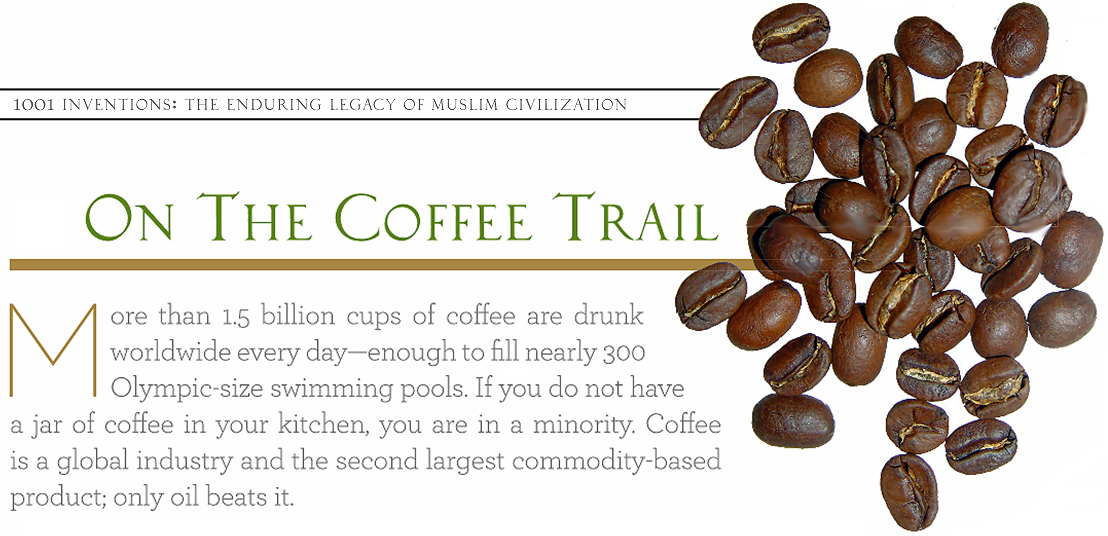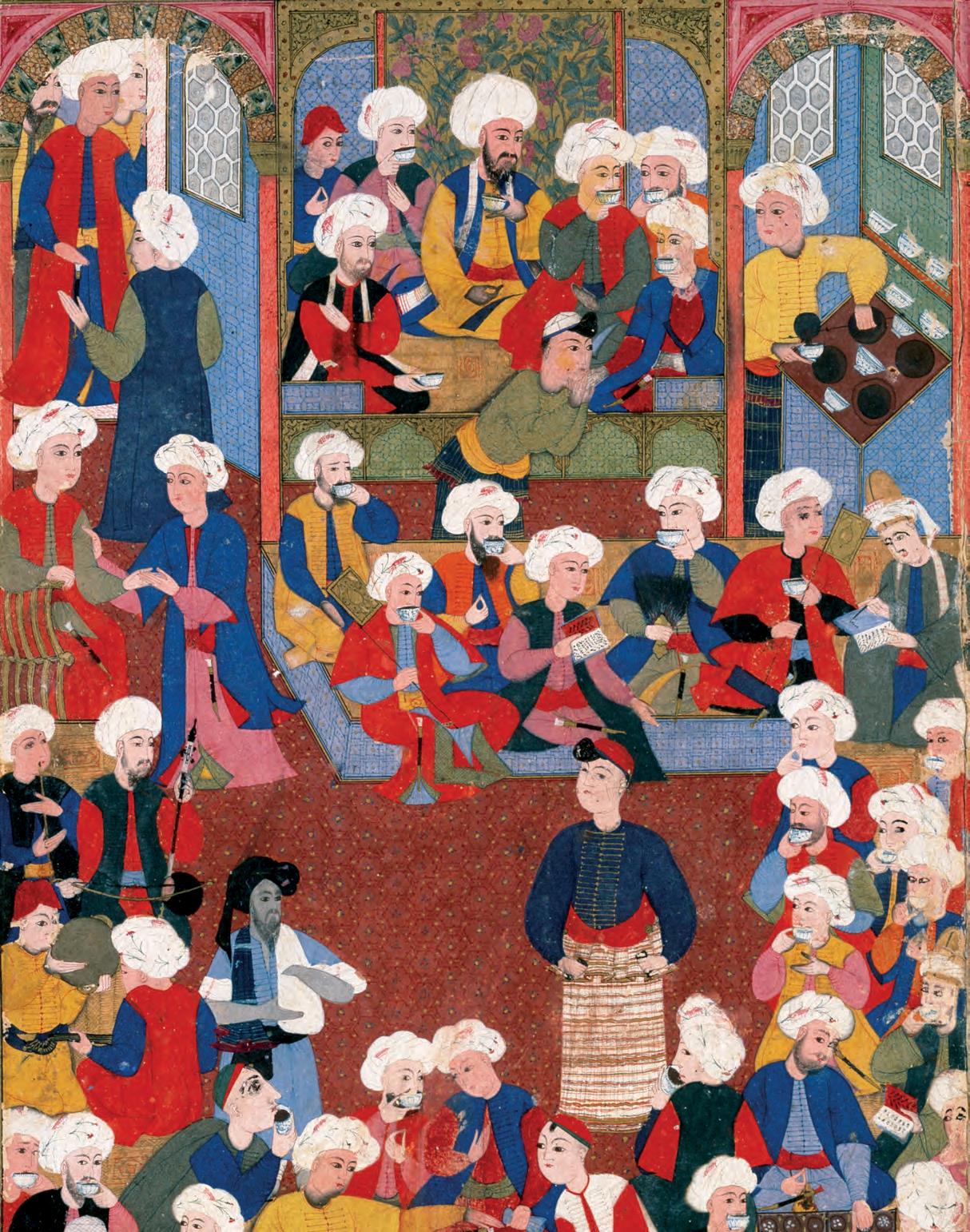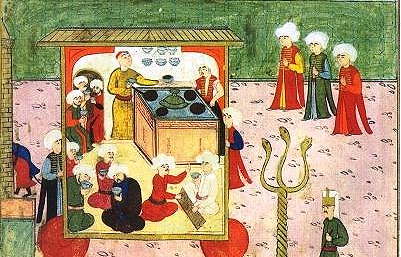“Coffee is the common man’s gold, and like gold,
it brings to every person the feeling of luxury and nobility.”
Sheikh ’Abd-al-Kadir, who wrote the earliest known Manuscript on the history of coffee in 1588


More than 1,200 years ago, as the story goes, a herd of goats and their watchful master, a shepherd, discovered this simple, life-changing substance. As his goats grazed, he noticed they became lively and excited after eating a particular berry. Instead of just eating the berries, people boiled them to create al-qahwa.
Sufis in Yemen drank al-qahwa for the same reasons we do today, to stay awake. Coffee was spread to the rest of the Muslim world by travellers, pilgrims, and traders, reaching Mecca and Turkey in the late 15th century and Cairo in the 16th century.
It was an Ottoman merchant named Pasqua Rosee [Paşa Rıza] who first brought coffee (kahve) to England in 1650, selling it in a coffeehouse in George-yard, Lombard Street, London. Eight years later, another coffeehouse called Sultaness Head was opened in Cornhill. Lloyd’s of London, today a famous insurance company, was originally a coffee shop called Edward Lloyd’s Coffee House. By 1700, there were about 500 coffeehouses in London and nearly 3,000 in the whole of England. They were known as “penny universities” because you could listen and talk with the great minds of the day for the price of a coffee.

The consumption of coffee in Europe was based largely on the traditional Muslim preparation of the drink. This entailed boiling the mixture of coffee powder, sugar, and water together, which left a coffee residue in the cup because it was not filtered. However, in 1683, a new way of preparing and drinking coffee was discovered, and it became a coffeehouse favourite.
Cappuccino coffee was inspired by Marco d’Aviano, a priest from the Capuchin monastic order, who was fighting against the Turks besieging Vienna in 1683. Following the retreat of the Turks, the Viennese made coffee from abandoned sacks of Turkish coffee. Finding it too strong for their taste, they mixed it with cream and honey. This made the colour of coffee turn brown, resembling the colour of the Capuchins’ robes. Thus, the Viennese named it cappuccino in honor of Marco D’Aviano’s order. Since then, cappuccino has become popular for its enjoyable, smooth taste…
Get the full story from 1001 Inventions: The Enduring Legacy of Muslim Civilization Reference (4th Edition) Annotated.
www.amazon.co.uk/1001-Inventions-Civilization-Reference-Annotated-ebook/dp/B0775TFKVY/


